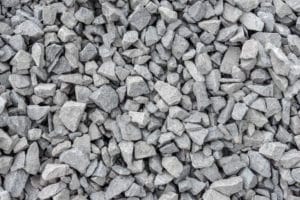U.S. Gravel Roadways In Dire Need of Gravel and Pavement Upkeep
 All across the country, broken down dirt and gravel roads might look good for photography projects, but when it comes to transportation, these roads are in dire need of assistance.
All across the country, broken down dirt and gravel roads might look good for photography projects, but when it comes to transportation, these roads are in dire need of assistance.
That’s where crushed gravel and material maintenance comes in.
At the residential level, homeowners love using crushed rockery rocks and crushed gravel to improve their property’s hardscapes. In fact, according to the 2017 Houzz Landscape Trends study, 38% of homeowners upgrading their pathways, driveways, patios, terraces, and using crushed rock and gravel.
These landscaping rocks are great for residential landscaping purposes, but civil engineering departments need to start finding ways to use these materials to tend to broken down roadways.
According to Lancaster Farming, in Pennsylvania, where many broken-down gravel and dirt roads are located, statewide programs are finally beginning to address some of these problems.
More than $500,000 has been funneled to approximately 150 projects to address concerns about dirt, gravel, and little-used paved roads across Lancaster County. Under the Pennsylvania Dirt, Gravel and Low-Volume Road Program, drainage has improved on about 90% of the county’s 82 miles of unpaved roads, keeping storm water from flushing harmful dirt and other pollutants into adjacent streams. Additionally, 10 miles of the area’s lowest-volume paved roads (which see fewer than 500 vehicles a day) have been fitted with rain gardens, upgraded gravel and pavement projects, and other measures to control storm water runoff and maintain roadway durability.
“I’m real pleased the township has done this,” said Terry Frantz, who has lived on a broken down crushed gravel roadway in Pennsylvania for 43 years.
The Pennsylvania Dirt and Gravel Roads Maintenance Program increased its efforts in 2014 from $5 million a year to $35 million for statewide roadway renovations.
“The municipalities see the funding as road maintenance funds on roads that do not get a lot of traffic,” added Matt Kofroth, watershed coordinator for the Lancaster County Conservation District. “We see it as water quality improvements on roads that are typically adjacent to fragile stream environments.”
Of course, this is just one example of a locality dealing with washed out and broken-down gravel roads. You can find these roadways just outside the borders of every major U.S. city. Fortunately, dirt and gravel roads and driveways are often much easier to repair than typical paved roads. Often, drainage gravel and gravel delivery services are all that’s required to repair a road for years to come.
